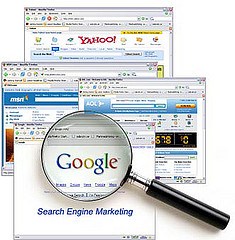Today’s guest post is from Geoff, the creator of Don’t Do It Yourself, a website that helps entrepreneurs with strategies to find and hire freelancers for their business. Geoff recently published a must read ebook for anyone struggling to get traffic: How I Tripled My Affiliate Revenue Without Adding Traffic and You Can Too.
One of the hardest aspects of running an online store is getting traffic. If only you could rely entirely upon organic searches or word of mouth. But many of us have to resort to paying Google to send us traffic.
I’m relatively new to paying for search traffic (commonly known as PPC or Pay Per Click). But I do have some common sense and I understand the basics of copywriting. So I thought that setting up a PPC program through Google AdWords would be a breeze. But I quickly found out you can’t rely solely on common sense.
Through a few unprofitable campaigns, I learned the hard way that I wasn’t going to figure everything out on my own. So after a few mistakes, I consulted with a PPC expert. He opened my eyes to a few tricks that made a big difference and I want to share them.
Here are my favorite “not so obvious” PPC tips for a profitable PPC campaign:
1- Be certain your campaign makes a profit. Before starting, determine how much you value each new visitor. If you don’t understand how much you can afford to pay per click, you’re going to lose money fast. The easiest way to figure this out is to take all your online profit for a month (product sales, affiliate commissions, etc.) and divide it by the number of unique visitors you had in that month. Once you know your average profit per visitor, you should be able to spend up to that much per click (with a caveat – see the next item).
2- Not all keywords are created equal. The type of search someone is doing will mean more or less value to you. So don’t fall into the trap of paying for non- targeted traffic that appears “cheap”. You want targeted traffic where searchers are looking to take action and buy products.
3- Do not “Set it and forget it”. Finding an optimal keyword formula is an iterative process, even for the pros. When you’re first starting out set up an “experimental” daily budget that you’re not afraid to lose and review your stats daily. Keep tweaking your keywords, ad copy, and bids until you figure out what works.
4- Send search visitors to targeted pages, not your homepage. Create specific pages to finish where your ad leaves off. If you want a visitor to buy a specific product, don’t just send them to your home page where they will need to make another decision. Send them directly to a product page which should be optimized to sell.
5- Find long tail variations of your keywords. Long tail keywords (3 words or more) receive less traffic than shorter keywords, but typically cost much less per click. Interestingly enough, the more words a user enters in search, the more you know about that visitor and the easier it should be to get them to convert.
6- Mobile PPC is a large % of searches. And not only that, clicks typically cost less so don’t ignore this market. Just make sure your website is setup to handle mobile traffic first.
7- Be very specific with your ad copy. Create different ads for different types of keywords so you can convert better.
8- Use dynamic keyword insertion. This is one of my favorite tricks. Keyword insertion adds the keyword being searched into your ad copy. This has the double benefit of making the ad more relevant to the searcher by repeating the keyword and the search term will appear in bold which stands out.
9- Match keywords on your landing page. If a searched keyword appears on your landing page, you’ll get a higher quality score which means you’ll pay less for traffic. Your ad will appear higher in the results and be served more often. Now you can’t put every search term on your website or it will look ridiculous, but you can select a few high value keywords.
10- Once you start paying for traffic, focus on making the most possible money from it! Optimize your site to sell and work on your profit margin. I was able to triple my revenue without increasing my traffic and I recently published an ebook about it. While the book focuses on affiliate marketing, many of the techniques are also applicable to running an online store. And it’s free, so check it out!
{Featured image via Danard Vincente}


Everything is very open with a very clear
explanation of the challenges. It was definitely informative.
Your site is very helpful. Thank you for sharing!